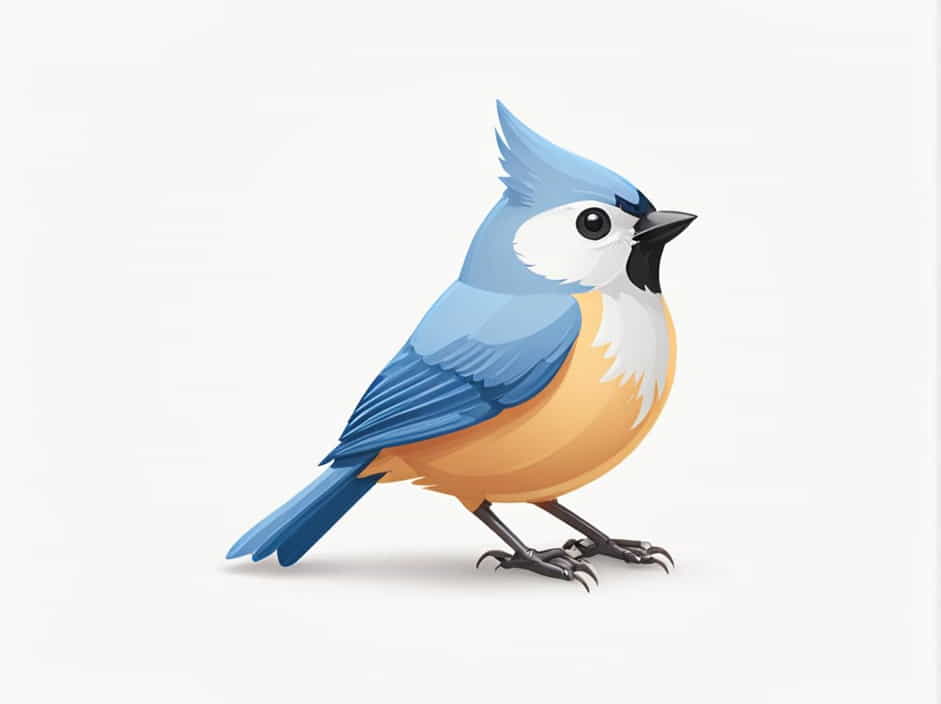The titmouse is a small, lively bird commonly found across North America. Known for its playful nature, distinctive crest, and cheerful songs, the titmouse is a favorite among birdwatchers. But have you ever wondered why it’s called a titmouse?
The name may sound unusual, but it has a fascinating history rooted in linguistic evolution and Old English terminology. In this topic, we’ll explore the origins of the word “titmouse”, how it evolved over time, and some interesting facts about this charming bird.
What Is a Titmouse?
The titmouse belongs to the family Paridae, which also includes chickadees and other small songbirds. There are several species of titmice, but the most common in North America is the Tufted Titmouse (Baeolophus bicolor).
✔️ Size: Small, around 5.5–6.3 inches long.
✔️ Appearance: Grayish body, white underparts, and a small crest on the head.
✔️ Habitat: Woodlands, parks, and backyard feeders.
✔️ Behavior: Active, curious, and often seen in mixed flocks with chickadees.
Now that we know what a titmouse is, let’s dive into the origin of its name.
The Origin of the Name “Titmouse”
1. The Word “Tit” Comes from Old English
The first part of the name, “tit”, originates from Old English and early Germanic languages. It was used to describe small birds or small things in general.
✔️ In Old English, “tit” referred to something small or delicate.
✔️ Similar words exist in Germanic languages, such as the Old Norse “tita” and Middle Dutch “tit,” both meaning small bird.
✔️ This prefix is still used in bird names today, such as titmice, tits (in Europe), and tit-warblers.
2. The Word “Mouse” Has Nothing to Do With Rodents
The second part of the name, “mouse”, is where things get interesting. The word “mouse” in titmouse has no connection to actual mice.
✔️ “Mouse” comes from the Old English word “mase”, which meant a small bird.
✔️ Over time, English speakers misinterpreted “mase” as “mouse” due to phonetic similarities.
✔️ This linguistic shift is an example of folk etymology, where words change because people associate them with more familiar terms.
Thus, “titmouse” originally meant “small bird”, not a bird related to mice.
Evolution of the Name Over Time
The name titmouse has evolved throughout history. Here’s a look at how it changed:
✔️ Old English: “Titmase” (small bird)
✔️ Middle English: “Titemose” (influenced by “mouse”)
✔️ Modern English: “Titmouse” (finalized spelling)
Interestingly, when referring to multiple titmice, the correct plural form is “titmice”, not “titmouses.” This is because the word was mistakenly thought to follow the same pluralization rules as “mouse/mice.”
How the Name Differs in Other Countries
In Europe, birds from the same family are simply called “tits” instead of “titmice.”
✔️ Great Tit (Parus major) – A common European species.
✔️ Blue Tit (Cyanistes caeruleus) – A small, colorful bird found across Europe.
✔️ Long-tailed Tit (Aegithalos caudatus) – A tiny bird with a very long tail.
The word “tit” is widely used in British English, but in American English, “titmouse” is the preferred term.
Fun Facts About the Titmouse
✔️ They can remember where they hide food. Titmice are known for storing seeds and remembering their locations.
✔️ They are not shy. Unlike some small birds, titmice are bold and will often come close to humans.
✔️ They use other animals’ fur for nesting. Titmice sometimes pluck fur from animals like squirrels and deer to line their nests.
✔️ They recognize human voices. Studies show that titmice can distinguish between different people based on their voices.
Why Does the Name Matter?
Understanding the origins of bird names helps us appreciate language evolution and cultural influences on nature terminology. The name “titmouse” is a great example of how words can change over centuries due to pronunciation shifts and misinterpretations.
The titmouse got its name from a combination of Old English words that originally meant “small bird”. Over time, the word “mase” was mistakenly linked to “mouse,” giving us the modern name titmouse—even though it has nothing to do with mice!
This small but lively bird continues to delight birdwatchers and nature lovers with its playful behavior and cheerful calls. Now, the next time you spot a titmouse at your feeder, you’ll know the fascinating story behind its name!
